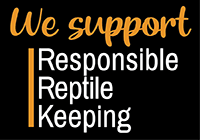Introduction to Bioactive Terraria

Introduction into Bioactive Terraria
Joshua Halter
The Bio Dude
Thebiodude.com
20 May 2019
In almost every area of the world where life is supported, there are millions of different biological processes that happen right under our feet and above our heads. From biological decomposition of organic matter, to the different cycles that incur naturally in nature; our unique planet has many different tools for maintaining an equal balance between Earth, air, fire and water. To maintain these different balances each living organism has a unique role to play, in which it will either benefit the ecosystem or cause an abrupt change. To maintain life, there are different processes that breakdown organic matter or follow through with unique cycles, such as the Oxygen, Nitrogen or Hydrogen cycle which create the water we drink and the air we breathe. With that in mind, envision a forest floor; deciduous, tropical, temperate or even sparse desert environments all have different ways of getting nutrients back into the environment to maintain the efficacy and living conditions of the biome itself. In this article, I will discuss how these different processes and cycles must be replicated, as closely as possible in a captive environment when keeping reptiles and amphibians as pets. Commonly kept in un-furnished, human décor terrariums, reptiles, amphibians and invertebrates are wild animals, that have wild instincts, adaptations that must be nurtured and reinforced for the captive animal to have a natural, healthy well-balanced life. To mimic these cycles, creating a self-cleaning, bioactive terrarium is the best standard of care to keep reptiles and amphibians as pets. This article will clearly explain different methods in which to do so.
Since the trade began gaining popularity around the 1970’s, there have been few innovations when standards of care are concerned, but overall the hobby standard has plateaued with few innovations in care. Innovations in UVB from Arcadia Reptile, automatic misting systems from Mist King, nectar diets from Pangea Reptile, glass terrariums from Exo-Terra are all great examples of the innovation of the standard of care for the reptile hobby as a whole. However, when looking at the scale of substrates, instinctual nourishment, ability to provide live plants to herbivores or omnivores, nourishment of maintaining tunnels and burrows and other basic/most important husbandry aspects of reptile keeping have been stale and untouched. The term bioactive coined its name back in the mid 1990’s when Poison Dart Frogs became imported with the utilization of springtails and isopods in the Atlanta Botanical Gardens (ABG) mix with leaf litter and other organic matter mixed in to provide a self-cleaning, self-maintaining eco system. Since then, it has been very hard for hobbyists to replicate the same results themselves for different biomes, such as temperate forests, deciduous forests, plains, desert and even different types of neo-tropical habitats. Keeping reptiles and amphibians in a 100% organic, self-cleaning, self-maintaining setup will allow you to closely replicate their natural environment, which in turn nurtures the natural instinctual niches that make these animals so unique to begin with. Another great benefit to bioactive is the money saving aspect. While initially, you may spend more upfront, long term you will save a significant amount of money and time from not constantly replacing substrates and other terrarium accents. This one and done deal will maintain the entire life of the animal, as long as it is maintained appropriately.
When choosing to go bioactive there are many different avenues in which you can choose from to get started. A solid understanding of the care, needs and diet of your pet reptile or amphibian is very important along with requirements. This is where your options become available to you. After selecting the appropriate size enclosure, figuring out what type of substrate to use is the next step. If you prefer to utilize your own, handmade mixes, it is very important to understand how well the soil drains, aerates and if you are going to need a drainage layer. If you do not want to create your own mixes, the Bio Dude is pleased to offer a full range of bioactive substrates to cater to the needs of each biome while taking the needs and instinctual niches of the inhabitants in to consideration. The drainage layer is the very first step when constructing a tropical or neo-tropical bioactive terrarium and can be composed of many different types of material: pebble rocks, clay pebbles (LECA) or growstone. If you are looking for a drainage layer that is very light, 100% natural with no glass that fully aerates and drains, the Bio Dude’s HydroGrow is recommended. The point of the drainage layer is to catch any and all excess draining water out of the substrate to prevent over saturation. Over-saturation will quickly ruin and kill your terrarium. Oversaturation will cause a buildup anaerobic bacteria(bad) which will outcompete the aerobic(good) bacteria causing a pH imbalance, soggy soil, root rot and a potential buildup of toxic methane as a byproduct in your terrarium. When maintained appropriately, your substrate will take on water. Excess water will fall through and sit directly into the bottom of the drainage layer. As long as the water line does not exceed the drainage layer into the substrate, the proper soil will maintain, cycle and flourish for the life of the animal. If the water level gets too close to the substrate, simply siphon out the excess water. A screen on top of the drainage layer can help to separate out of the soil and drainage layer. With the Bio Dude’s HydroGrow that is not necessary. It is highly recommended with alternative drainage layers to use a screen to prevent the soil from mixing with the drainage layer.
The soil is placed on top of your drainage layer (if a drainage layer was required), and if a drainage layer was not needed, placing the soil directly into the terrarium. Soil ingredients such as coco coir, peat moss, sand, charcoal, orchid bark, Spag moss and other things can all be used and mixed to your liking, but it is very important to know that the soil is aligning with the humidity and biome requirements. Poor soil consistency will quickly kill the terrarium and can even cause damage or death to the inhabitant. If you do not want to create your own mix, the ABG mix (mentioned above) is a great tool for very high humid terrariums, but that too will eventually breakdown into a very large orchid based substrate over time. The Bio Dude is very pleased to offer different substrates for different biomes. Terra Flora for your high humidity environments (dart frogs, tree frogs), Terra Fauna for neotropical reptiles and amphibians(Crested Geckos, Day Geckos), Terra Firma for all temperate, deciduous or burrowing reptiles or amphibians (Ball Python, Corn Snake, Tegu), Terra Sahara for all desert species (such as Bearded dragons) and lastly Terra Aranea for all invertebrates such as spiders and tarantulas. Whether you choose your own mix, Bio Dude’s mix or another vendors mix be sure to apply at least a 2.5” substrate depth layer for tropical or neo-tropical and at least a 4”-8” depth for all desert and deciduous/temperate forest reptiles and amphibians. It is imperative to provide this deep layer as many of these reptiles and amphibians are burrowers and will quickly create a network of tunnels or burrows that they would naturally create in the wild.
The Terra Firma, Terra Sahara and Terra Aranea will retain all tunnels, burrows and hides that your animals naturally create, further nurturing the natural wild animal instinct. It is very important to mix in valuable biodegradeables into you substrate. These biodegradeables breakdown over time to create organic nutrients for your soil and plants so the biome is constantly revitalized via natural, organic processes. These essential biodegradeables are broken down multiple ways. The first way, is via tiny organisms that live in almost every ecosystem on the planet. Springtails (wood lice) and isopods (rolly pollys). These important organisms breakdown wood, feces, shed, leaf litter, dead plants and other organic matter and transform it into viable nutrients used by your soil. They will also play a pivotal part in aerating your soil. Another means, which it the method that the Bio Dude uses in his bioactive kits is the utilization of numerous types of fungi, mycorrhizae and archaea bacteria. They are many ecosystems’ backbone to proper change and development. They will breakdown organic matter on all levels of the terrarium via molds, slimes, mushrooms and other processes. As these microscopic processes breakdown matter, they create Nitrogen and other important organic compounds that are utilized by plant roots. These processes will also aid in the breakdown of shed, feces, dead plants, leaf litter, woods and mosses, slowly over-time creating your natural, bioactive ecosystem. The Bio Dude is very happy to offer a blend of all of these processes available called Bio Shot. You can readily find assorted biodegradeables at the Bio Dude or you can collect them yourself, as long as you know it is from a clean, pesticide, herbicide free area. Remember, whatever you put into your terrarium will stay in your terrarium as it is a closed ecosystem.
Another benefit of a bioactive ecosystem is allowing the keeper to utilize live plant. Not only do many reptiles prefer to have live plants in the terrarium, but it also provides many different types of benefits for them. When keeping your herbivores and omnivores on bioactive, it allows the keeper to purchase healthy edibles, such as various herbs or spineless cacti that your animal can naturally forage or graze directly in their terrarium. Not only does this nurture their natural instincts, it allows them to act like the wild animals that they are. Many reptiles will utilize the live plants as a hiding area (chameleons hide in live trees, tree frogs hiding under broad leaves) to help make them feel more secure and at home. While the live plants improve the air quality in the terrarium, many of them will also hold excess water in the roots, axils or on the leaves, giving your reptiles and amphibians more options for hydration.
Overall, bioactive is the best way to keep your reptiles as pets. When looking at pet reptiles as a whole, some keepers fail because they are not properly maintaining the big three when it comes to reptile husbandry. Proper shedding, respiration and hydration. When providing a proper bioactive environment it is very easy to provide the perfect care and husbandry these animals require. With a dense substrate that retains proper air pockets to aerate appropriately the substrate will have various humidity pockets in which your reptile can easily rehydrate, shed and have clean, fresh air in their terrarium. When keeping reptiles and amphibians as pets it is important to remember one thing: you want to provide the best care, not the basic care, using research driven practices and techniques. Providing all the essential elements of care will not only give your reptile a full life, but allow them to act like the wild animals they are by nurturing the wild instinct that makes them so unique as animals in the first place.
- Josh Halter










